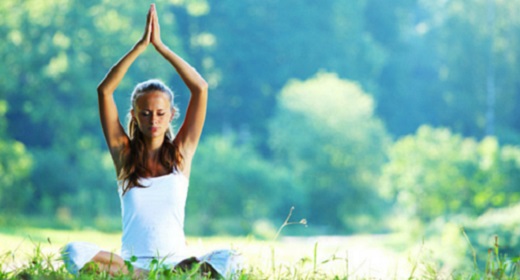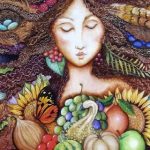by Heidi Spear: Do you love the long nights of winter, or do you dread the early sunsets?
Our mindset has quite a lot to do with how much we enjoy this time of year, and trading resistance for gratitude can change everything about how we experience it. It is colder, darker, and wetter in winter, and that can be seen as a gift.
There are many ways to cherish and make the most of this beautiful season unlike any other time of year.
1. Celebrate the Light
One of the most exquisite ways to be mindful during the cold months is to engage in outdoor activities or to gaze out the window and observe nature in daylight. It can be captivating to admire what you see in the moment and to return to the same place day after day to notice what’s new. This is a way to connect to something greater than ourselves, which naturally is calming and awe-inspiring.
Poetry about nature can serve as a guide to mindfulness in the moment feels and the way it engenders a natural appreciation for the world around us.
For example, during the late autumn and winter especially, one might walk by the goldfinch in certain parts of the world. At the start of her poem called “Invitation,” Pulitzer-prize winning poet Mary Oliver remembers the goldfinch and asks us:
Oh do you have time
to linger
for just a little while
out of your busy
and very important day
for the goldfinches
that have gathered
in a field of thistles
for a musical battle,
to see who can sing
the highest note,
or the lowest,
or the most expressive of mirth,
or the most tender?
In the first few stanzas, Oliver already sets into motion a moving image for the mind to recreate as if the reader were right there in broad daylight. Visualization and imagination are effective tools to relax the body and evoke joy because the body reacts to imagined scenarios in the same way it would during actual experiences.
2. Create Adventures Outside, Alone and Together
In the beloved children’s picture book, The Snowy Day, Ezra Jack Keats writes about the many ways to enjoy the snow. Peter notices his own footprints in the snow, knocks snow off trees with a stick, builds snowmen, makes snow angels, and so much more. He uses his imagination to create adventurous ways to play outside. After sliding down a mountain of snow, he makes a snowball:
He picked up a handful of snow — and another, and still another. He packed it round and firm and put the snowball in his pocket for tomorrow. Then, he went into his warm house. He told his mother all about his adventures while she took off his wet socks.
This beloved children’s book calls to mind happy memories for children and adults who have found their bliss on snow days when light reflects brightly off the mounds. The joy is so great for Peter that he brings the snow inside, only to experience sadness when it melts. Thankfully, The Snowy Day ends on a high note: Peter’s happiness returns in the morning when he sees the snow outside again and takes a walk with a friend to enjoy it
This book reminds us of the natural joy that comes from cultivating comfort in nature and how the relationship with the outdoors in different seasons can be so grounding and fun. Bundling up is key, and coming in to warm drinks, well-cooked meals, and cozy blankets makes all the difference.
3. The Season to Recuperate
As we enter Kapha season, nature encourages us to slow down. We can feel it. Now is the time to give in to that hibernation feeling that calls us to take extra time for rest. We feel the pull to go to bed early, to hunker down inside, and to move more slowly.
In this modern world, our tendency is to push against that natural call to slow down. We live life as if we should feel the same every season of the year. It’s no wonder that people tend to get sick this time of year, fighting against natural tendencies. We can give ourselves permission to listen to nature and the body by letting ourselves reap the benefits of Kapha season, while at the same time keeping Kapha in balance by staying warm and keeping energy flowing so we don’t succumb to lethargy.
To create the balance of leaning into Kapha season and maintaining equilibrium, plan to allow for more rest and to create activities that keep energy moving to nourish you, your family, and friends in the way that makes sense this time of year. Some ideas are:
- Finish your work and strenuous activities during the daylight hours so you can more fully relax into activities at night that don’t require daylight, bright lights, or extended screen time.
- Allow space at night for connection with yourself and others: play games, cook and eat leisurely meals, and extend the bedtime routines of reading, cuddling, and winding down.
- Let your mind wander to reflect, to dream, and to imagine. The darkness outside allows the senses to become more inward, not distracted by glorious sights outside.
- Create memorable rituals for yourself and your family. Maybe this is the time of year when you make particular meals together, do certain crafts, or read together.
- Get movement into your day. Take walking breaks outside. Do breathing exercises and other activities indoors that keep the energy flowing to prevent energetic stagnation.
As you sink into this stunning, restorative season, you will see you don’t have to force yourself to relax. When you stop resisting the pull to be more inward, you naturally will get more rest-and-recovery time. Remember that this is part of the natural flow of the year. When the seasons change again, you naturally will have more energy again like you did last summer.
4. What We Can Learn from the Stars
The stars signify so much more than reminders of the mysteries of the cosmos and our ability to appreciate the magnitude of the experience of being alive. As we notice how tiny we are in the universe, we also can remember that we are believed to be made of star stuff, as the astronomer Carl Sagan famously said.
To further explore the vast universe in which we live and to discover more about the first stars that existed, NASA developed the James Webb Telescope set to launch on December 22, 2021. A project that has been in the works for three decades, this could illuminate more about our very existence, including how the universe began and how it will end, according to Amy Lo, PhD, in her TEDx talk, Why Humans Need to See the First Stars Ever Formed.
These dark days can be fruitful times of deep rest and nourishment as we rest and restore, preparing for the spring like seeds planted in dark soil. For many, this season brings dark days for personal reasons; and, for all experiencing winter now, daylight hours are fewest this time of year. We can work on staying well and balanced by giving in and enjoying the benefits of the darkness, by turning our awareness to the light, and by connecting in harmony with the natural world of which we are a part.

















































